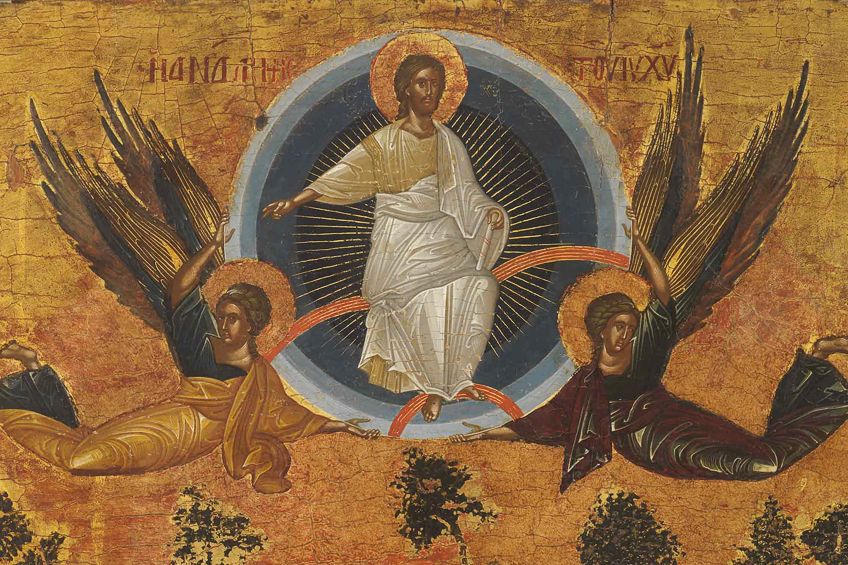Describe the Art of the Early Byzantine Period.
The first golden age of the empire the Early Byzantine period extends from the founding of the new capital into the 700s. Scholars typically divide Byzantine history into three major periods.
A Brief History Of Byzantine Art And Its Characteristics
- From early basilica churches to Byzantine churches clerestory windows were used to provide lighting in the interior of churches and together with decoration enabled the creation of interesting interiors.
. Early Byzantine art presented Christian stories and the Gospels through multi-leveled symbolism. Early Christian and Byzantine Art Sarcophagus of Junius Bassus 359 CE marble Treasury of Saint Peters Basilica Early Christian art also called Paleo-Christian art or primitive Christian art architecture painting and sculpture from the beginnings of Christianity until about the early 6th century particularly the art of Italy and the western Mediterranean. The paintings and mosaics were meant to remind worshippers of their God and the architecture was meant to serve both.
330-730 the Middle Byzantine from c. In this way their use of graceful floating figures and golden tesserae emphasized the otherworldliness of the religious subjects. Roman Art Early Christian Art.
Christianity replaced the gods of antiquity as the official religion of the culturally and religiously diverse state in the late 300s. 843-1204 and Late Byzantine from c. Learn early byzantine art with free interactive flashcards.
The Early Byzantine period began with the rule of Emperor Justinian I and his spouse Empress Theodora. If we reckon the history of the Eastern Roman Empire from the dedication of Constantinople in 330 until its fall to the Ottomans in 1453 the empire endured for some 1123 years. For 117 years no depictions of Christ the Virgin or the saints were allowed.
The reasons for the similarities between the two art forms would be that the Early Christians borrowed stylistically from the Romans. Choose from 500 different sets of early byzantine art flashcards on Quizlet. The shift from polytheism to monotheism would account for the similarities and differences between Roman and Early Christian art.
Describe the art of the Early Byzantine period. Describe the characteristics of art during this period. Early Christian art ps from the first to fifth centuries followed by the vast era of Byzantine art from the fifth century to the 16th century in Eastern Europe.
What are the characteristic of Byzantine art. Likewise you have studied how Greek art sought to capture Idealism how the Hellenistic period sought to capture Realism and how Roman art. Most works of art were painted on sheets of vellum which is a thick papyrus material.
The practice of Christian monasticism developed in the fourth century and continued to be an important part of the Byzantine faith. Technology - The Early Christian and Byzantine period saw the most extensive use of clerestory windows. Many church murals and mosaics were created.
Much of the art during this period had a religious context or enacted a religious purpose. The colors are vibrant and glorifying. The Early Byzantine from c.
Byzantine art and architecture is usually divided into three historical periods. The history of Byzantium is remarkably long. Many church murals and mosaics were created.
Early Byzantium Middle Byzantium. The aim of their art was to inspire a sense of wonder and admiration for the church. Name this piece of art from the Middle Byzantine period.
Byzantine art preferred stylized imagery over naturalistic depictions. 3-4 sentences please 2 See answers Advertisement Advertisement Brainly User Brainly User The name of the piece is Virgin of Vladimir. Early Byzantine art presented Christian stories and the Gospels through multi-leveled symbolism.
Even more damaging was the concreted effort made by the iconoclasts to destroy countless works from the Early Byzantine period hence the fragmentary knowledge of this early artistic period. Most works of art were painted on sheets of vellum which is a thick papyrus material. Byzantine art an introduction About the chronological periods of the Byzantine Empire Icons an introduction Byzantine Iconoclasm and the Triumph of Orthodoxy Ancient and Byzantine mosaic materials Wearable art in Byzantium Early Byzantine including Iconoclasm Browse this content Architecture The origins of Byzantine architecture.
Hopefully you have submitted your essays to the Reading and Response on Early Christian and Byzantine Art illustrating the shift from the Greco-Roman Period. The political social and artistic continuity of the Empire was disrupted by the Iconoclastic Controversy from 730-843 and then again by the Period of the Latin Occupation. It cannot be overstated the damage this period 726-843 had on the art of Byzantium.
Early Christian and Byzantine Art. Individual features were suppressed in favour of a standard facial type figures were flattened and draperies were reduced to patterns of swirling lines. The mature Byzantine style evolved through the stylization and standardization of late Classical forms of Early Christian art was based on the dynamic of lines and flat areas of colour rather than form.
Describe the art of the Early Byzantine period. Posted on November 10 2011 by cmarchbank. The growing practice of Christian monasticism alongside the prosperity and power of the Byzantine Empire launched a series of artwork and architectural designs aimed at celebrating and spreading Christian ideals.

Early Byzantine Art And Visual Culture Prehistory To Renaissance

Belum ada Komentar untuk "Describe the Art of the Early Byzantine Period."
Posting Komentar